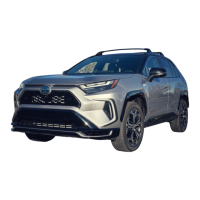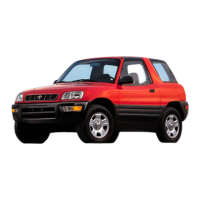117
2
2-2. Charging
Plug-in hybrid system
Make sure that there are no foreign
objects attached to the connection
before installing the plug-cord. Remove
any foreign objects if they are attached.
Otherwise, water or other foreign mat-
ter may enter the CCID (Charging Cir-
cuit Interrupting Device), resulting in a
malfunction.
Turn the plug-cord connector nut of the
plug-cord in the opposite direction of
removal until a click sound is heard and
the plug-cord is secured.
7 Install the plug-cord connector
cap and release key to the plug-
cord that has been removed.
Securely install the release key to the
plug-cord connector cap to prevent it
from being lost. Also, make sure that
the release key does not fall out of the
plug-cord connector cap accidentally.
Store the plug-cord in a safe, clean and
dry place.
For safety, inspect the AC charging
cable on a routine basis.
■ When replacing the plug-cord (if
equipped)
Check the following points regularly.
Failure to do so may cause an unex-
pected accident, resulting in death or
serious injury.
● Do not replace the plug-cord with
wet hands.
Also, do not replace in a place that
is rainy or wet.
● Do not replace the plug-cord when
the plug and/or charging connector
are connected.
● Check whether there are any local
EV-charging regulations in place,
and adhere to them.
● Do not leave the CCID (Charging
Circuit Interrupting Device) with the
plug-cord removed.
● Make sure that there are no foreign
objects attached to the connection
when installing the plug-cord to the
CCID (Charging Circuit Interrupting
Device).
● When replacing the plug-cord,
firmly turn the nut of the plug-cord
until a click sound can be heard.
● Do not replace the plug cord in Nor-
way.
■ Precautions for the plug-cord (if
equipped)
Do not use the plug-cord for any use
other than charging this vehicle.
Doing so may cause the plug-cord to
be damaged.
Inspecting and maintaining
the AC charging cable

